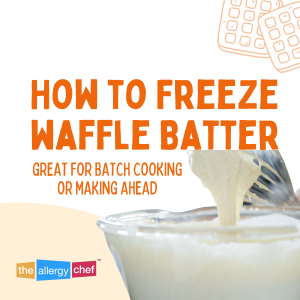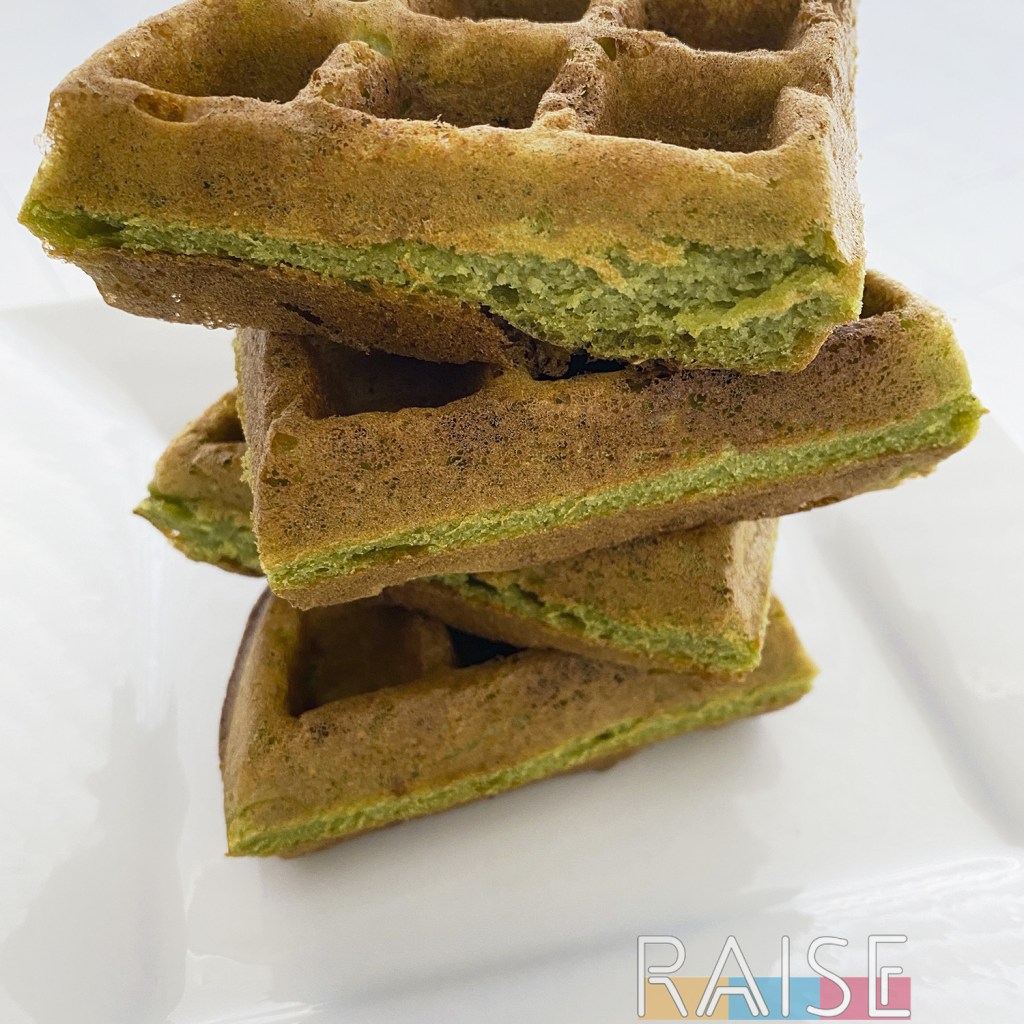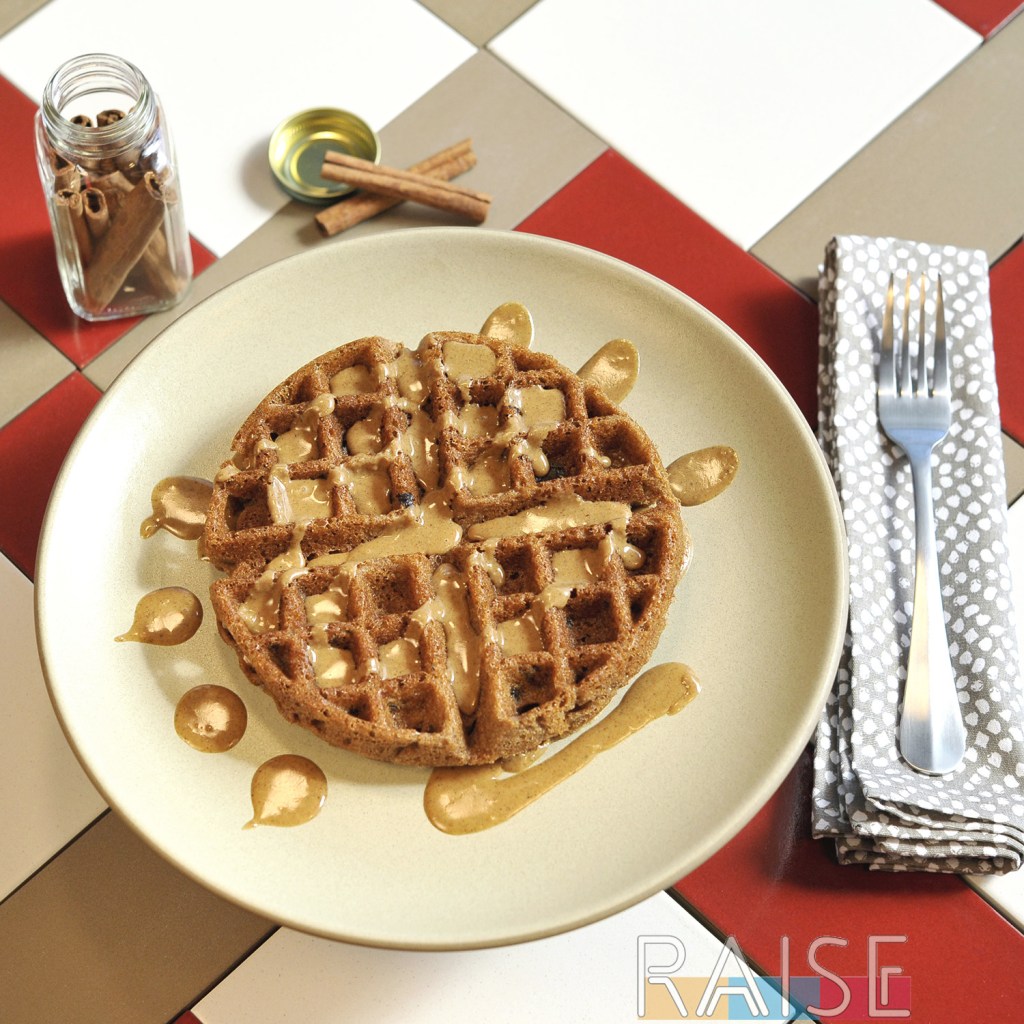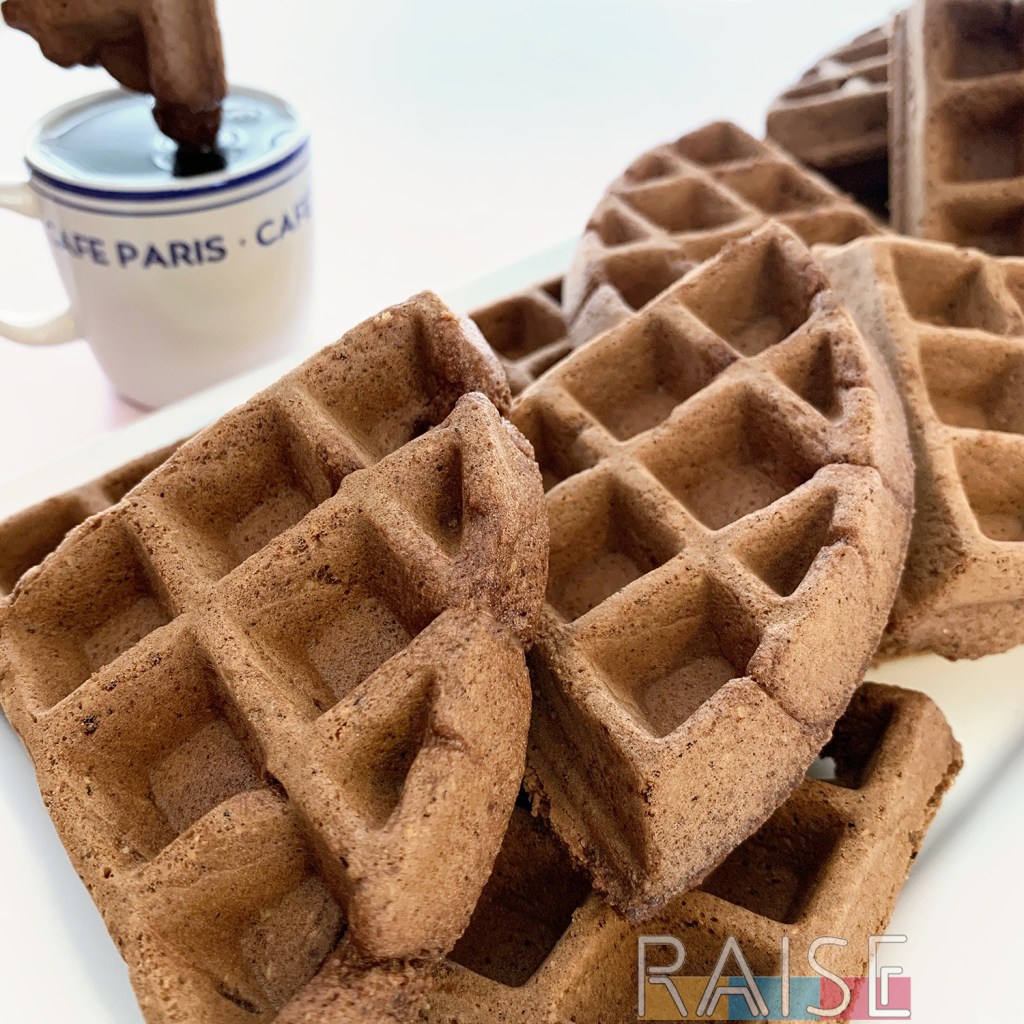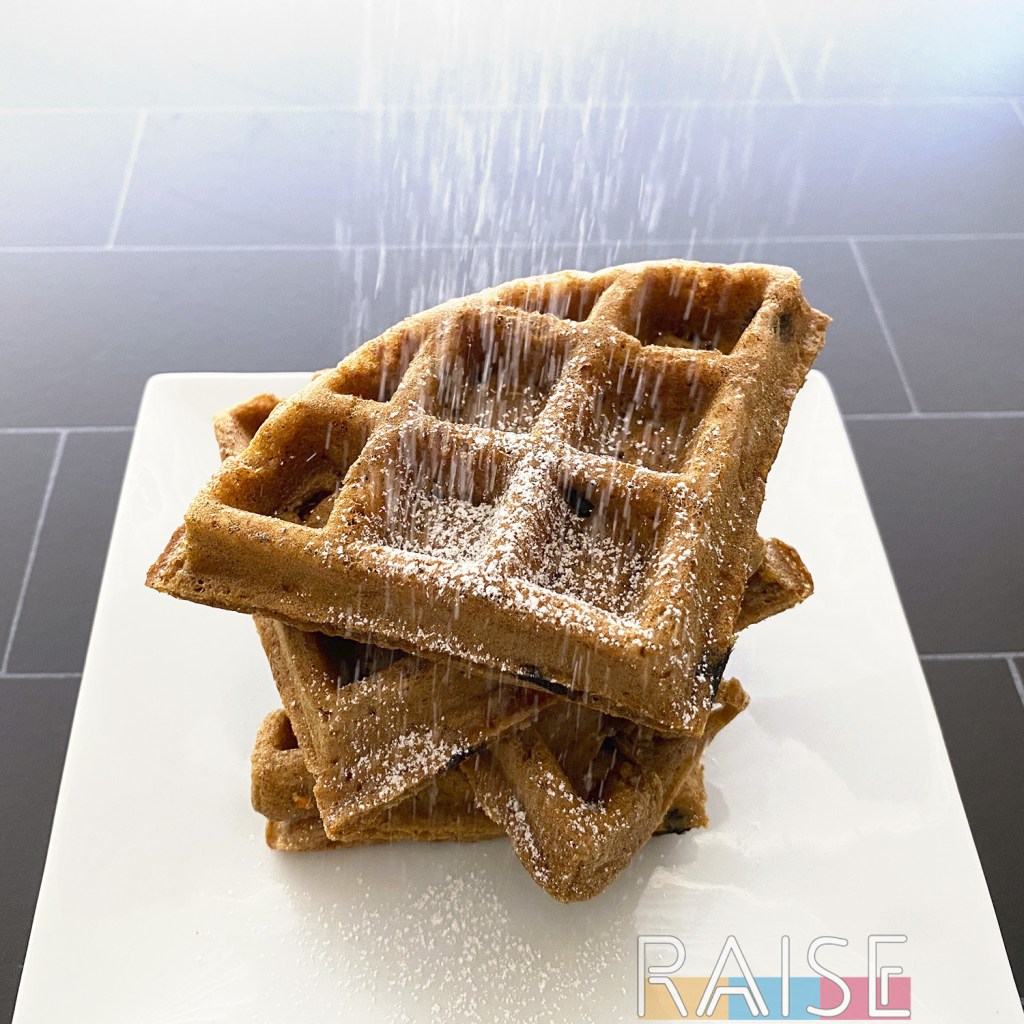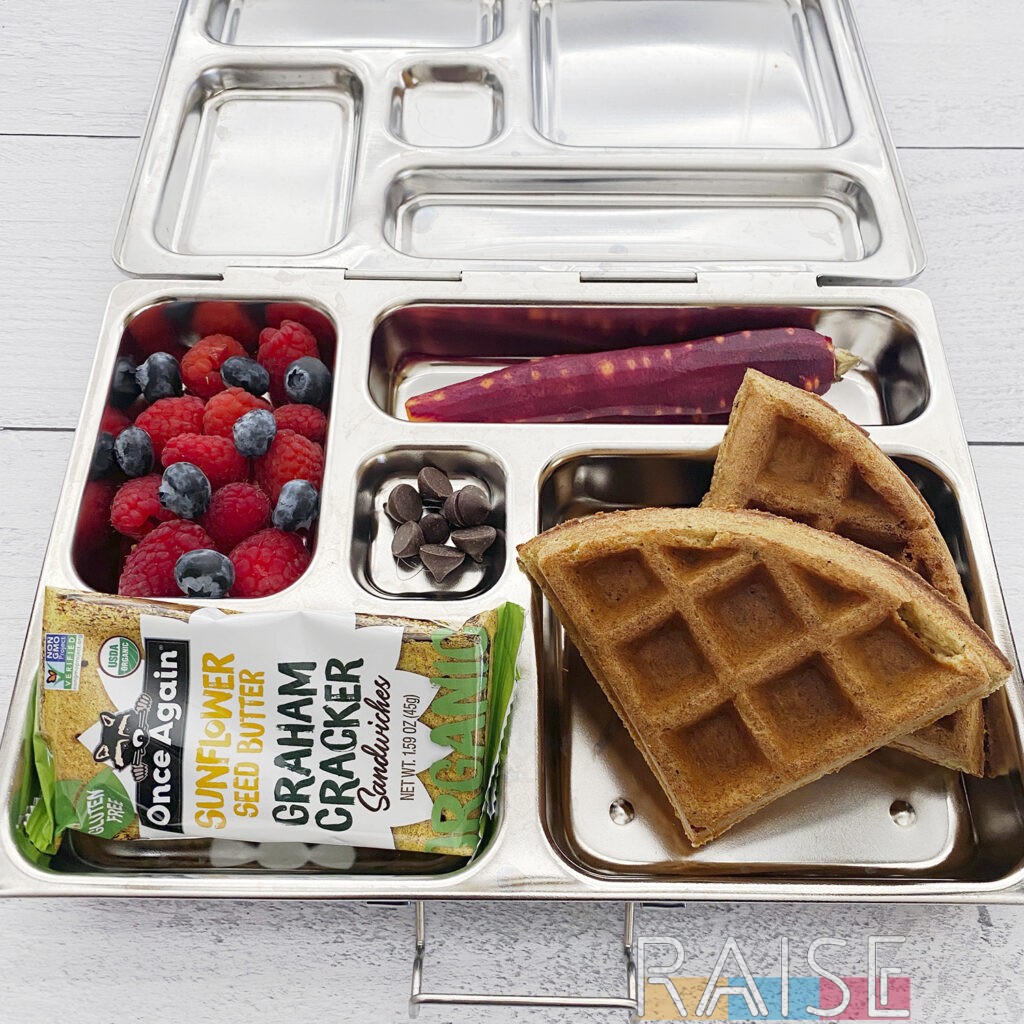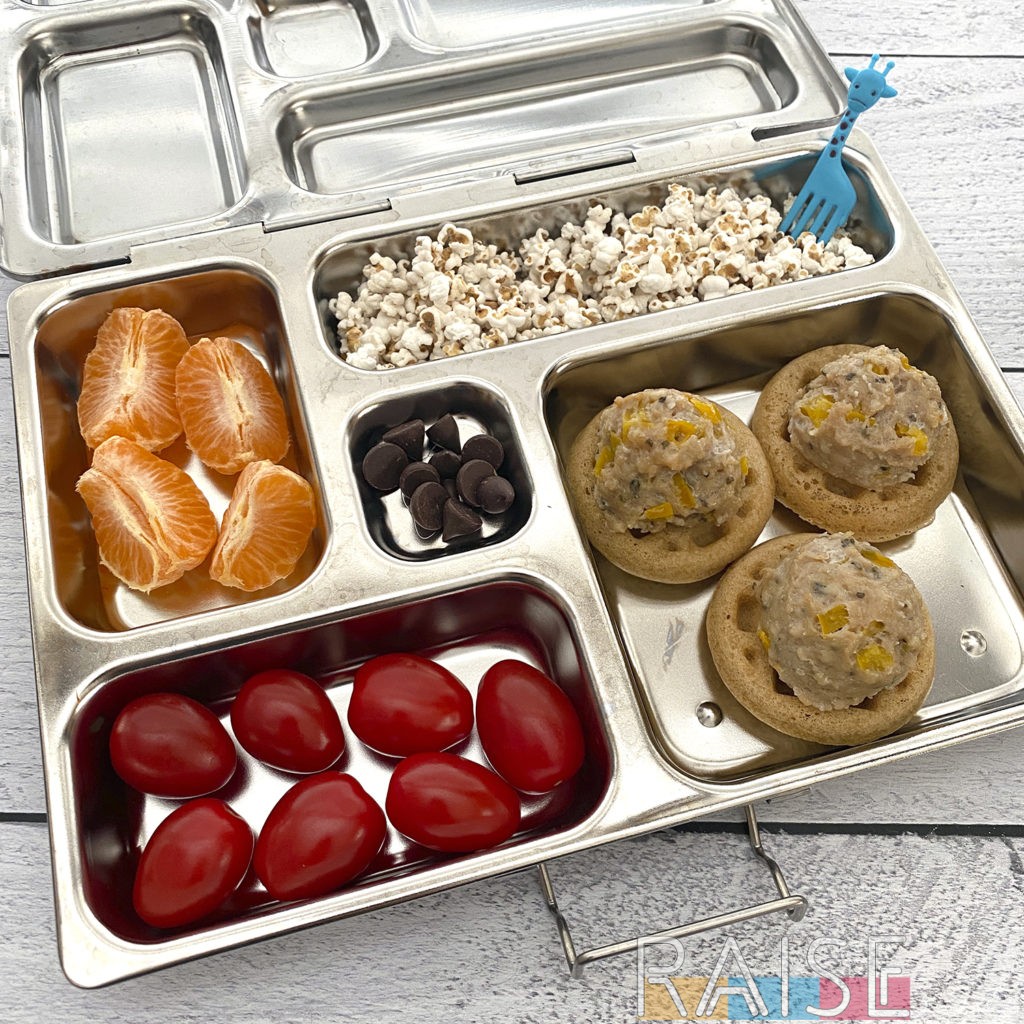Homemade waffles have so much potential because you can create flavour profiles you won’t find in your local grocery store. Additionally, you can save quite a pretty penny by getting your own waffle iron and making waffles at home. Now, I know not everyone has time to make waffles from start to finish on a regular morning, and there are several short cuts you can take.
Time & Money Saving Tip: Make Your Own Dry Waffle Mix
Before we talk about freeing batter, here’s my best time and money saving tip for you. Pre-mix your dry ingredients (if you make your waffles from scratch), and store them in a baggie. Some people enjoy buying waffle mix, but honestly, once you’ve made them from scratch a few times, you’ll see that mixes aren’t critical. Convenient, yes. Critical, no.
You can spend 20 minutes on a weekend making several baggies of pre-made dry ingredient mix and label the bag. It’s like what you would get from the grocery store, just without the box. Fun fact, you can do the same thing with your pancake mix as well. I’ve also done this with cake and muffins, which has saved me loads of time.
How to Freeze Waffle Batter
Freezing waffle batter can save future you quite a bit of time, and it’s a relatively easy process. You can freeze leftover waffle batter when making a huge batch of waffles, or you can mindfully make small batches of waffles and freeze all of the batter. You would do the latter if your goal is to have a wide range of batter flavours in the freezer, ready to go.
To start, make your waffle batter. This works with any type of waffle recipe, and you’ll follow the normal process. Mix the dry ingredients together with the wet ingredients. Once your batter has formed, you’ll either cook the batter in your waffle maker or transfer the batter to a freezer safe container.
When I freeze waffle batter, I opt for reusable glass containers that stack well, which helps keep the freezer well organized. No matter how you choose to store your batter, be sure to label the container.
Avoid freezing liquid batter in plastic baggies if possible. Once thawed, a good amount of batter will adhere to the bag when you make the waffles. If that’s your only option though, go for it.
How to Thaw and Use Frozen Waffle Batter
The easiest way to thaw your waffle batter is on the countertop, overnight. However, this isn’t advisable for all recipes. The waffle recipes that I share are all gluten free, dairy free, egg free, etc., meaning the hazard risk is incredibly low for a batter to sit out overnight for about 6 hours.
If your recipe contains egg, cow’s milk, or other hazardous ingredients, thaw your batter in the fridge. It’s best to give it 24 hours to thaw in the fridge (some batters may thaw faster, especially if you’re thawing a small amount).
Once your batter is thawed, it should be very similar to the original consistency. Slight changes are OK, but it shouldn’t suddenly be extra lumpy, or have frozen chunks mixed in. When the batter is fully thawed, heat up your waffle maker and use the batter the same you would when it’s fresh. You don’t need the batter to be room temperature to use it (feel free to use it straight from the fridge).
How to Freeze Cooked Waffles
If you’re not much of a morning person, freezing cooked waffles can be one of your many saving graces in the morning. Whilst waffles are a great breakfast food, they can take some time to make and cook. Freezing them can also be a great way for you to have a delicious and warm breakfast on busy weekday mornings without putting in too much energy.
After cooking and cooling a whole batch of waffles, line a large baking tray (or a cookie sheet) with a sheet of parchment paper. Place cooked waffles on the tray (it’s OK if they’re touching, but don’t stack them yet. When you have a full single layer of waffles, add another piece of parchment paper to cover. Now, you add the next layer of waffles. The parchment paper will prevent the waffles from sticking together during the freezing process.
Once you have all of the waffles on your tray, place the whole tray into your freezer. Allow the waffles to freeze completely (the time varies from freezer to freezer, but at least a few hours). Once your waffles are solid, transfer them to a large freezer bag. Be sure to label the freezer bag with the creation date and flavour (this is the best way to easily rotate thru your freezer stock).
Labeling will allow you to use your delicious waffles before they expire (time flies and it’s easy to forget about them). Depending on how many waffles you make, you may need to use a second baking sheet in the freezing process, as you don’t want to crush your waffles on the bottom layer (I don’t stack more than 3 layers high).
To prevent freezer burn, make sure you remove all excess air from your freezer bag. Whilst you won’t get it all, get as much as you can.
How to Thaw Frozen Waffles
You may wonder when you’d want to thaw a frozen waffle, but not heat it up. Most people overlook the superpower of homemade frozen waffles: their ability to double as a fantastic lunch. When my kids were younger, on busy mornings I’d grab homemade waffles from the freezer, pop them in a lunch box, and add some produce & snacks. Talk about an easy lunch.
For the recipes that I share, refrigeration is not necessary (egg and dairy free). I can leave the waffles at room temperature for about 90 minutes and they’re fully thawed. The thaw time is shorter for smaller waffles such as a 2″ waffle or 4″ waffle.
If you plan to put waffles in a lunch box that needs to be refrigerated, include an ice pack. Be sure to give this a test run at home to make sure the waffle thaws completely in your allotted timeframe.
Alternatively, you can heat your frozen waffle until *just* thawed, then put it in a lunch box with an ice pack if needed.
How to Reheat Frozen Waffles
Wether you’re reheating really big waffles, regular waffles, or mini waffles, your options are the same. Though, your cook times will vary based on the size. Heating waffles you’ve frozen will make for a quick breakfast that’s also delicious, and less expensive than commercial waffles.
Option One: Toaster Oven. This is my preferred method since it was something my kids could to independently. This options works great for all sizes of waffles. One of my kids says 375 or 400f is the best temp, and they like to reheat until the waffle is thawed, hot, and crispy again. The toaster oven method will re-crisp your waffle if it’s heated long enough.
Option Two: Regular Toaster. You may purchase toaster waffles at the grocery store, and the great news is that you can make them at home. You’ll need to use a 4 inch (commercial size) mini waffle maker when cooking your waffles. To thaw, simply place the frozen waffle into your toaster, adjust the settings if needed, pop it down, and wait for toasted goodness to pop back up. The regular toaster option will re-crisp your waffle.
Option Three: Microwave. Confession: we don’t have a microwave, however, friends have told me you can thaw your frozen waffles in the microwave. If you’re new to this method, start with a 1 minute cook time to gauge how long it takes your specific recipe/size to thaw and reheat. This method won’t re-crisp your waffle.
Option Four: Regular Oven. This is my least favourite method because it takes time for your oven to preheat. Sure, you can put the waffle in whilst it’s preheating, but the overall time it takes is cumbersome. The only time I prefer this method is if I need to thaw and reheat several waffles at once. Should you be doing that, line a tray with parchment paper, place the waffles on, and heat the entire tray until the waffles are done to your likeness. This method can re-crisp your waffles, and your bake temperature should be 375-400f.
Option Five: Air Fryer. Most air fryers have a setting for reheating frozen foods. Start with 4 – 6 minutes. Your time and temp will vary based on the size of your waffle. This method should be able re-crisp your waffle.
Be Empowered and Inspired!
Here are a few waffle recipes my kids adore. You can enjoy fresh waffles, freeze leftover batter, or freeze cooked waffles with these recipes. My waffle recipes are gluten free, vegan, and allergy friendly. If you don’t need that, be sure to find recipes that meet your needs.
- Pumpkin Waffles Recipe (makes for a great hearty breakfast)
- Homestyle Waffles Recipe (an easy waffle recipe that will teach you basic ratios)
- Chocolate Waffles with a Hemp Seed Boost (one of my favorite ways to use hemp seeds for my kids who normally don’t like them)
- Chocolate Chip Sunflower Seed Butter Waffles
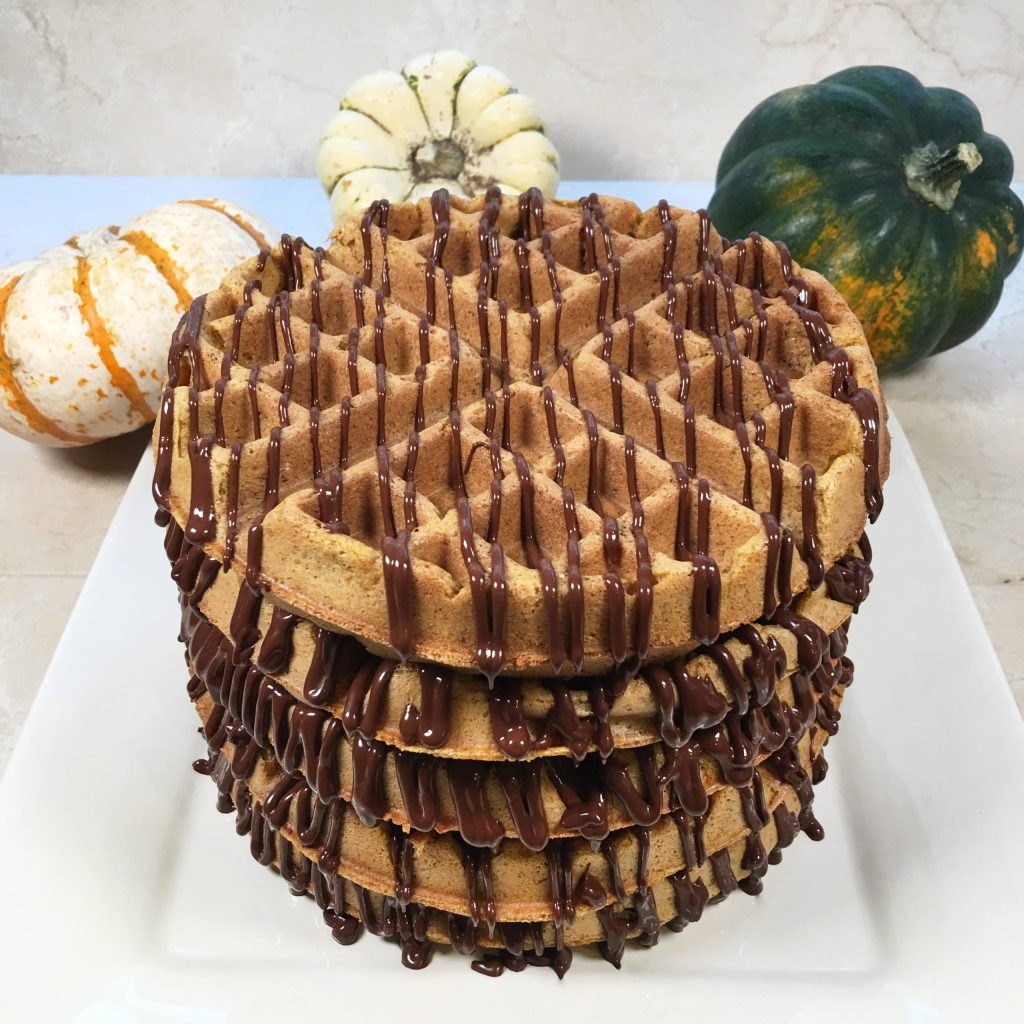 |
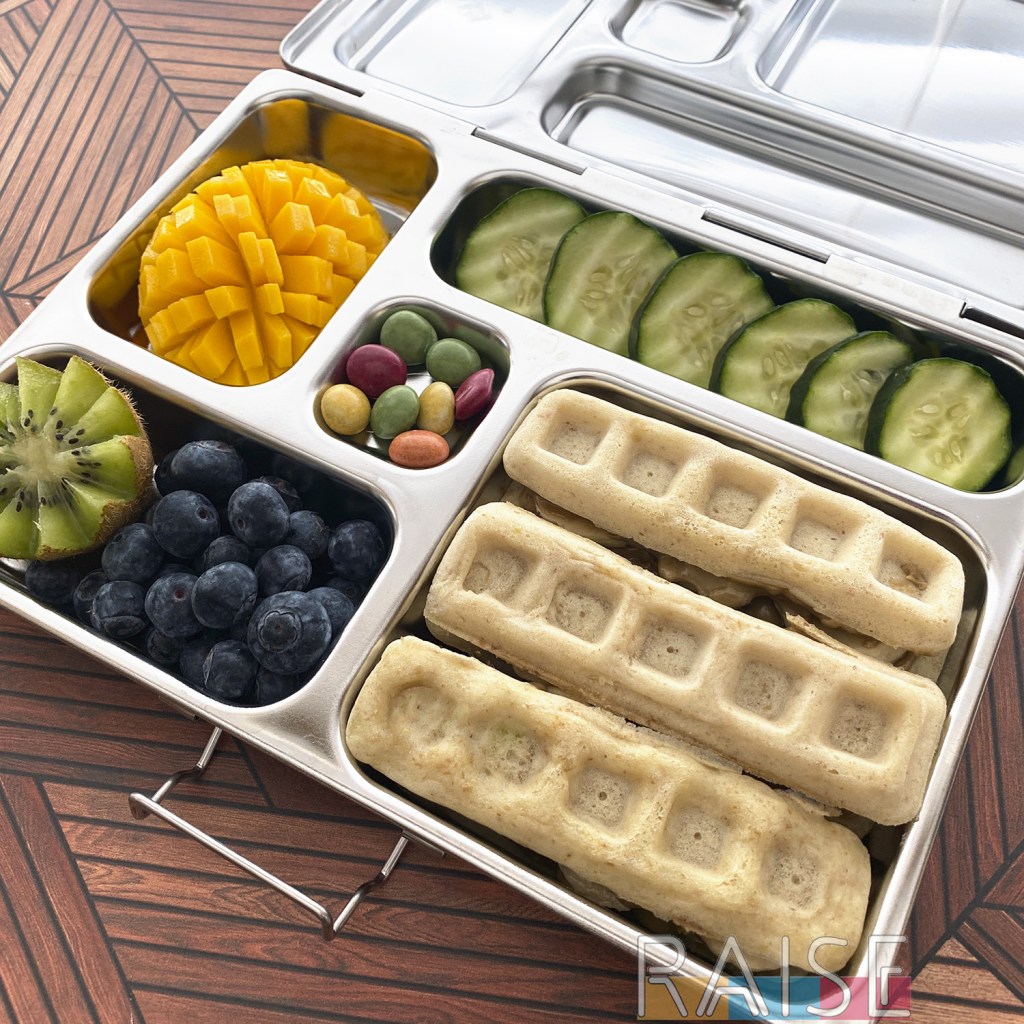 |
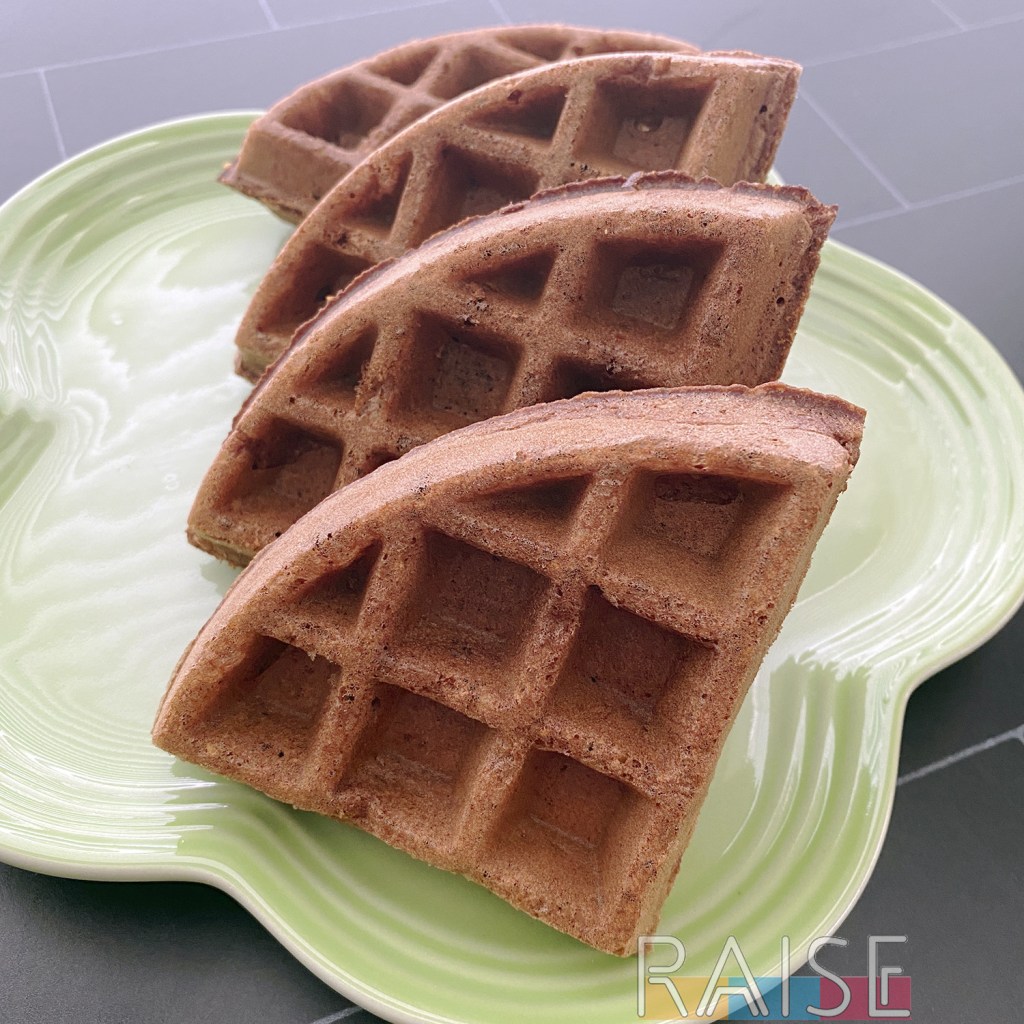 |
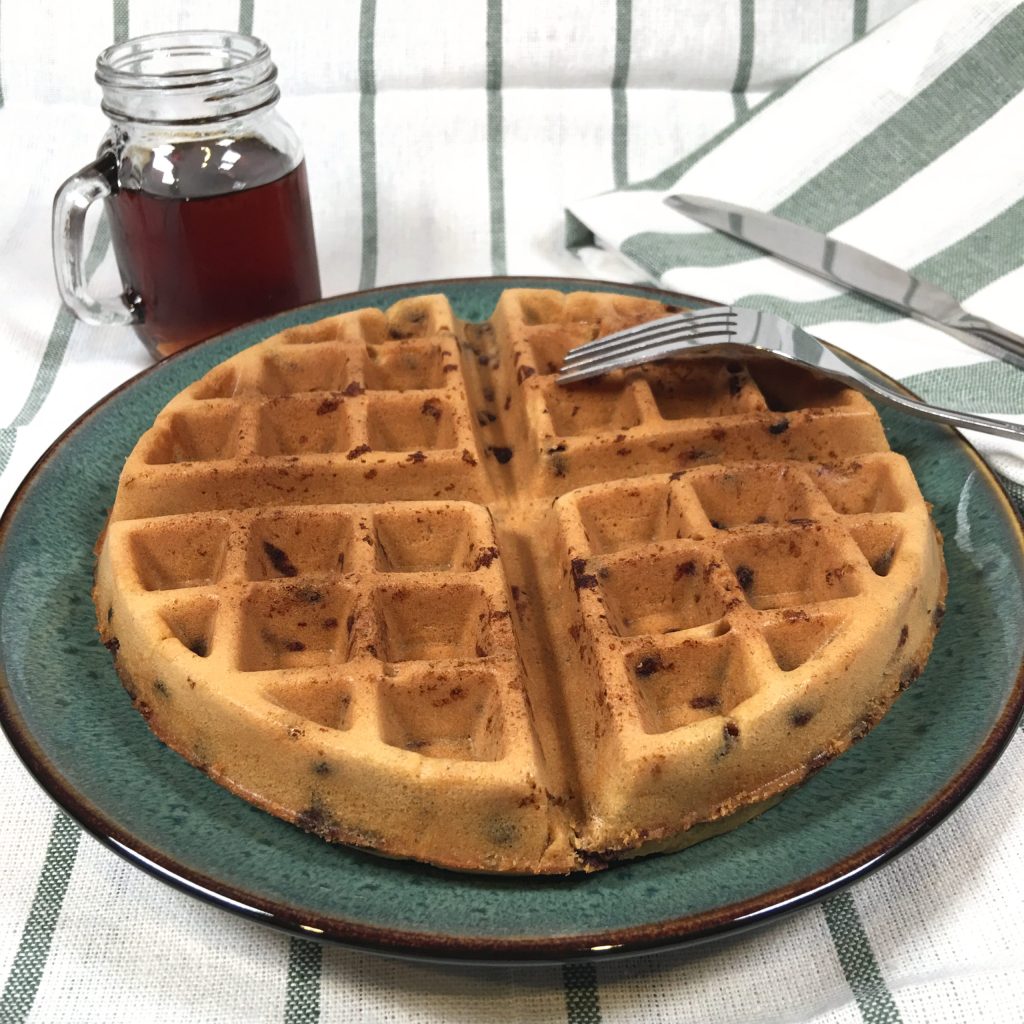 |
Answering Your Waffle Batter and Waffle Cooking Questions
Do I need to use a cooling rack when making waffles?
You can, but you don’t have to. When you’re cooking waffles, if you stack them on a plate when they’re done, you’ll create a steaming effect. If your goal was to have crispy waffles, they’ll soften the longer they sit stacked together. If you’d like to maintain the crisp, a cooling/wire rack will allow for that.
Are Belgian waffles different from regular waffles?
Traditionally, Belgian waffles are made from a yeasted waffle batter, and when cooked, they have larger/deeper pockets. Usually, Belgian waffles are coked in a Belgian waffle maker (the really big ones you see). In fact, my favourite kind of waffle maker is a large double Belgian waffle maker. You can make two waffles in one go, and the machine beeps when it’s ready. This allows me to walk away and get other things done in the kitchen at the same time.
These days, Belgian waffles are usually made with baking powder, but still in the large waffle maker. Most people don’t mind, unless they grew up with (and loved) the yeasted version.
Can I use an airtight container instead of a freezer bag when freezing my fresh waffles?
Yes, you can. However, in my humble opinion, it can be a waste of space. If your airtight container is the perfect size for your cooked waffles, then go for it. If there’s a lot of additional space, you may want to use a freezer bag instead. The quality of your thawed waffles will be the same in both containers, as long as you’ve removed all of the air.
What’s the shelf life of frozen waffle batter and frozen waffles?
That’s really going to depend on the recipe. I’ve personally kept batters frozen for two years, and when thawed, they taste perfectly fresh. Keep in mind, my batters are gluten free, dairy free, and egg free.
You’ll need to consult the original recipe for guidance on the specific shelf life, but you should expect a minimum of four to six months. The only way to really know the shelf life will be to test it out, as each recipe will freeze and thaw differently.
Cooked waffles can be stored frozen for four to six months without losing any quality. After that, you’ll start to notice a decline in overall texture. This assumes that they were perfectly frozen and there’s no freezer burn etc.
Can I use wax paper instead of parchment paper when freezing cooked waffles?
Technically yes, but I don’t, nor do a lot of other chefs. Personally, I don’t like the feel of wax paper in my hands, so I exclusively use parchment paper. However, wax paper isn’t the best for freezing all types of foods. It’s great for meats and some desserts, so if possible, use parchment paper.
If that’s all you have on hand, you can use it in the freezing method I outlined above in the article, especially since it will only be in contact with your waffles for a few hours rather than for several months.
Is there a huge difference between fresh cooked waffles from frozen batter and reheating frozen cooked waffles?
There are a couple of variables to consider: the recipe used, and who is eating the waffles. For example, if you’re using a super basic plain waffle recipe, you’ll tase the difference. If you’re using a pumpkin pie waffle recipe, you may not be able to pick up on the subtle change as much.
Toddlers and little kids are less likely to notice the difference, unless they have sensory issues or really refined palates.
I won’t say there’s a huge difference, but there is a difference for sure. Initially, we’re talking about a 3 – 8% difference in the texture. Fresh waffles will feel better in the mouth and that translates to a better taste.
The longer your waffles are frozen, the more pronounced this difference will be. Heating your frozen waffles will reduce the impact of the texture change. Overall, I don’t think this change is enough to warrant not freezing waffles. The act of freezing them empowers you to batch cook and get ahead on meals, and save yourself a lot of time.
I’ll also add: if you add toppings (fresh fruit, maple syrup, chocolate chips, etc.) to the reheated waffles, you’ll notice the difference even less.
Can I store waffle batter and cooked waffles in the fridge instead of the freezer?
You can store premade waffle batter in your fridge for several days. This is helpful if you make fresh waffles one day and want to do it again the next morning without all the dishes.
Cooked waffles on the other hand should never be stored in the fridge. Now, I can only talk about this from the gluten free and allergy friendly world, as that’s what I make. When I made a big batch of waffles for my kids, if I put cooked waffles in the fridge, the next day they were pretty awful. Edible, but not enjoyable, even when heated (and they were properly stored). The texture change is too great.
Cooked waffles should be stored in your freezer for best results. Above in the article, I’ve shared the different ways you can reheat and enjoy your waffles from the freezer.
Do I need to do anything special to my waffle batter if I plan to freeze it?
No, you should be able to make your waffles with the process you already use (same dry mix + wet ingredients). Should you plan to freeze cooked waffles, you’ll use the regular cooking process as well.

